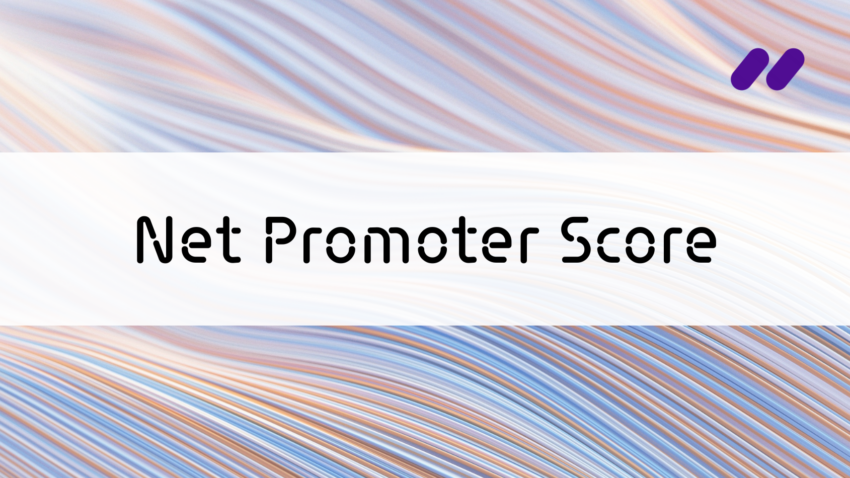The power of the Net Promoter Score (NPS) is in how you use it. Customer experience is now one of the most competitive areas for brands and has become essential to business growth. Companies that integrate NPS into their marketing strategies in the development stage are able to apply that data to CX areas such as customer care with more success, closing the customer feedback loop with survey analysis and achieving greater return on investment.
Any customer care interaction has the potential to gather data that reflects customers’ true feelings about products and services. If you reframe NPS as qualitative, behaviour-based data on customer loyalty, you can link it to other forms of customer feedback and analyze all of that data together using text analytics to uncover timely insights into your customers’ behaviour.
Used in tandem with qualitative feedback, NPS reveals the nuanced reasoning behind customers’ scores.
Customer feedback data from NPS becomes more than a marketing tool—it reflects the growth potential of your organization, shows you who is bringing in revenue, captures any problem areas in the pipeline, and provides possible solutions. Looked at that way, all the qualitative data you gathered from customers—including through essential customer care channels—translates into an equation: it becomes quantifiable. It turns the NPS metric into numbers tied directly to ROI, so you can use it to strategize and make decisions with company-wide, bottom-line reach.
Using NPS at a strategic level
NPS may seem like a simple metric: it’s one question based on a scale of 1 to 10, where promoters score 9 or 10. But used in tandem with qualitative feedback, NPS reveals the nuanced reasoning behind customers’ scores. Your follow-up questions combined with other feedback gathering provide both a bigger picture and specific details that are essential to successful marketing strategies, customer success best practices, product development and business growth. AI text analytics, when understood as a process of discovery through data, helps to define NPS within a more mature level of business strategy.
According to recent research by Forrester Consulting, how people think and feel about a brand determines how they act in relation to the brand, including whether they stick with it or leave for the competition. Brands currently rely on metrics like loyalty (60%), revenue growth (60%), and brand awareness (46%) to track their success with customers. The research showed a disconnect between how brands perceive customer behaviour and how customers actually feel: “52% of brands agree that small data is better than big data at helping brands understand the why behind a customer’s actions, but nearly half of brands agree they don’t have enough small data insights on their customers.” Using qualitative data, including data gathered through NPS surveys via customer care, to measure why people think and feel the ways that they do is key to turning the NPS metric into data you can reliably act on.
[Read more: What is NPS analysis? 101 Guide]
The link between customer care and loyalty
The Net Promoter Score measures customer loyalty based on how likely a customer is to recommend a product or service to a friend. Within that number are a multitude of reasons why customers are loyal—or not—to your brand. If your NPS is high, that’s reason to celebrate. If it’s low, you know you need to make improvements. Whatever your company’s score, you’ll need to dig deeper into customer data in order to use the real power of NPS.
Using qualitative data to measure why people think and feel the ways that they do is key to turning the NPS metric into data you can reliably act on.
Marketing software company Hubspot found that NPS is most effective when seen as a direct communication channel between a company and its customers. In each of their product support cases they include NPS, passing it on to product development and customer experience teams who use it as part of their short- and long-term solutions for customers.
By implementing a customer care strategy based on relevant customer feedback, companies improve the satisfaction rating of their customers: “If the latter increases, the referral rate also increases. Therefore, the NPS is also an indicator of the growth potential of your company or product.”
In terms of customer care, where consumers connect with companies through support channels and in person, NPS reflects just one brief moment in the mindset of a customer. It’s one dimension of what they think and feel about your brand. Yet the value of NPS is in that subjectivity. That is, the more opinionated and emotional the feedback, the better you’ll be able to understand where your customers are coming from when they answer that key NPS question.
To map out the “why” behind customer loyalty, combine the results from that question with the results from follow-up NPS questions and other relevant quantitative and qualitative feedback you’ve gathered. Emerging AI data analysis solutions have the capacity to comb through all that data and provide insights that have strategic applications.
Grow by integrating NPS into your data strategies
Typically, after a customer care call, an NPS survey is sent and feedback received. As a metric, NPS points out whether customers are satisfied or not, yet even a high score might not correlate with what customers really feel about your brand. Maybe they got along well with the customer care representative, but their problem wasn’t actually solved. If your organization can’t reach out to them, through customer care or otherwise, and solve that problem within a reasonable timeframe, customers may leave for a competing brand.
AI data analysis solutions have the capacity to comb through all the data and provide insights that have strategic applications.
AI-based text and sentiment analysis is fast, solving that timeframe issue. For example, where NPS doesn’t always translate back to sales due to the data it lacks, sentiment analysis— with its detailed, data-rich nature—traces out the path to sales numbers. The way Keatext analyzes quantitative and qualitative data puts customers at the centre, letting companies follow and understand both the customer journey and how it correlates to numbers, metrics and revenue.
As part of your broader business strategy, this level of data analysis allows you to support your strategies and decision-making using data correlations that predict the kind of ROI you’ll get. So when you put money into NPS as part of a strategy to increase sales, you’ll have a much clearer idea of your strategy’s outcome.


